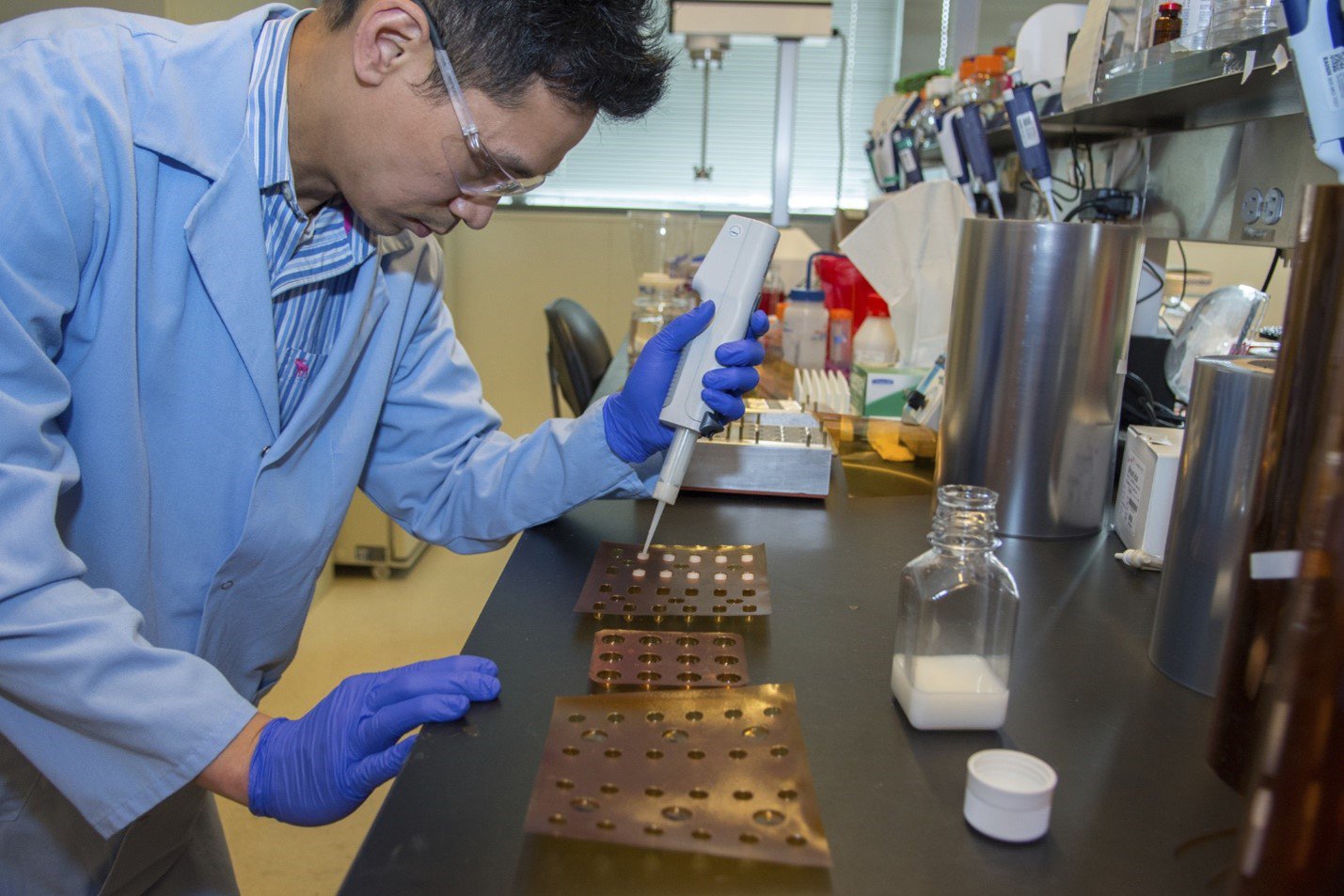With COVID-19 vaccines making headlines around the world, understanding the fundamentals is more important than ever. To help us explain the basics of vaccine formulation and formats, we talked to scientist Dr. Manjari Lal—who leads PATH’s work advancing the technology that helps make vaccines more accessible.
What is a vaccine anyway?
When your body encounters a new bacteria or virus—like coronavirus—your immune system carries out a coordinated, three-pronged attack. First, your white blood cells attack the invading germs directly. Then, a broader immune response works to rid the body of any infected cells. Finally, your body “remembers” the specific germ to make it easier to fight in the future.
Vaccines create immunity by harnessing the power of your immune system to create this same immune response using weakened, dead, or nonreplicating microorganisms to create immunity. Most of the time.
The COVID-19 vaccine candidates that have dominated recent headlines skip the step of introducing a germ (weak, dead, nonreplicating, or otherwise). Instead, these vaccines use messenger RNA (mRNA) to reprogram the cells in your body to produce the signature spiked protein of the SARS-CoV-2 virus without the harmful parts. That spiked protein catalyzes the immune response needed to protect you if you encounter the virus. Your body “remembers” how to fight it without ever actually being exposed.
“mRNA vaccines are a novel type of vaccine—COVID-19 is the first time this approach has been widely used.”— Dr. Manjari Lal, Medical Devices & Health Technologies, PATH
Both mRNA vaccine candidates look promising, and we are keeping a close eye on the peer-reviewed results for these vaccines and many others in development.
Drops, shots, and powders
Once we have the biochemical mechanism that triggers an immune response, then we can think about vaccine formulation. This refers to the way a vaccine is packaged and introduced into the body.
Most vaccines are still given as a liquid—using an injection via needle and syringe or as an oral drop. Needle-free technologies such as fast-dissolving tablets, inhalers, and microarray patches can help improve thermostability, reduce sharps waste, and can be easier to deliver in large immunization campaigns.
For example, an oral vaccine has played a vital role in the global effort to eliminate polio. Oral polio vaccine is easy to administer, which makes it a great option for immunizing communities without relying only on trained health workers.
New formulation methods continue to advance how vaccines are given. For example, methods like spray-drying or freeze-drying vaccines create new possibilities for powder vaccines that would be more stable at a wider range of temperatures. Pfizer has announced that they are working on a powder version of their COVID-19 vaccine candidate—which would be an amazing step forward for vaccine formulation technologies.

Novel approaches to vaccine formulations make vaccines easier to administer to patients than a traditional needle and syringe. PATH advances technologies like fast dissolving tablets for vaccines and other uses. PATH/Patrick McKern.
The formulation of equity
Why does vaccine formulation matter? Why do PATH and our partners spend so much time exploring new vaccine technologies?
As biochemical material, vaccines are sensitive to heat and other environmental conditions. While the global vaccine cold chain exists specifically to get vaccines where they need to go, we can also address this challenge through new vaccine formulations.
In general, dry forms (like powders and tablets) provide better long-term stability than liquid forms (like shots and drops). A spray-dried vaccine has a longer shelf-life and doesn’t require the same refrigeration that a liquid vaccine does. New, more thermostable vaccine formulations—which stay potent in a wider range of temperatures—make vaccines easier to distribute.
“Innovative formulations are needed to simplify the logistics of delivery—especially during a pandemic.”— Dr. Manjari Lal, Medical Devices & Health Technologies, PATH
One of the challenges facing the COVID-19 vaccine candidates is the need for an ultra-cold chain. The temperature requirements for RNA-based vaccines go beyond the capability of most existing cold chain equipment. So new technologies are needed to overcome the logistical hurdle of reaching all communities. Formulation technologies are one way to help us reach true vaccine equity.



